hrust is the force that propels aircraft and spacecraft. Propellers, jet engines, and rockets all produce thrust. Thrust is one of the four forces that act on a powered aircraft. The other three are drag, lift, and weight. Thrust is opposed by drag, so it must overcome drag if an aircraft is to accelerate.
Thrust is most often generated by speeding up a gas. According to Newton’s third law of motion, accelerating gas in one direction produces a reaction force in the opposite direction. The reaction force is thrust. The thrust produced by a jet engine depends on the amount of gas accelerated and the increase in its speed. The more gas the engine accelerates, and the greater its acceleration, the greater the thrust.
Thrust, as a force, is measured in the same units as other forces: either pounds – force or newtons. A thrust of one pound is the same size of force as the downward force of the weight of one pound.
Imagine that you have a bag containing a pound of sand
O Trent engines provide the thrust needed for the world’s largest airliner, the Airbus 380.
sitting on your hand. The downward force on your hand from the pound of sand is the same as a pound of thrust produced by a jet or rocket engine.
The most powerful jet engines fitted to an airliner are the General Electric GE90-115B engines that power the long – range Boeing 777-300ER. They regularly generate 115,300 pounds (510 kilo – newtons) of thrust, although they have produced as much as 127,900 pounds (570 kilonewtons) in tests.
When a propeller spins, its winglike blades produce lift, but instead of acting upward, the propeller acts forward. This forward-acting force is thrust. A spinning propeller lowers the air pressure in front of it and raises the air pressure behind it. The amount of thrust it produces depends on the size of the propeller and the pressure difference
 it creates. The bigger the propeller and the bigger the pressure difference, the greater the thrust.
it creates. The bigger the propeller and the bigger the pressure difference, the greater the thrust.
At takeoff, a rocket must generate enough thrust to overcome its weight and drag, both of which act downward. A rocket’s thrust depends on the speed of the jet of gas it produces and the rate at which mass is expelled from the rocket. The faster a rocket’s exhaust jet is, and the faster it burns its propellants, the more thrust it produces.
When the Space Shuttle lifts off, its three main engines burn propellants at the rate of 3,250 pounds (1,480 kilograms) per second and produce a total thrust of 1.2 million pounds (5,340 kilo – newtons). Their power is dwarfed by the two solid rocket boosters, which provide another 5.6 million pounds (25,100 kilo newtons) of thrust.
If an aircraft has a single engine, its thrust is directed along the vehicle’s centerline so that it flies straight. If it has more than one engine, they are arranged so that their thrust is balanced, or symmetrical. Unbalanced, or asymmetrical, thrust in a multiengine aircraft will make it yaw to one side.
Thrust may be made asymmetric purposely to help steer a vehicle. If an engine or just its exhaust nozzle is swiveled, its thrust is deflected, and the vehicle changes direction. This is called thrust vectoring. Rockets, airships, and
О The upward thrust that launches this Delta rocket is a reaction force produced by the downward jet of its exhaust gas.
some fighter planes use thrust vectoring.
Thrust also can be used as a brake to slow down a vehicle. When an airliner lands, a sudden roaring noise indicates that the crew has selected reverse thrust. The engine thrust is directed forward, and the aircraft slows down. Rockets also use reverse thrust for braking. Thrust in the opposite direction to the direction the rocket is flying makes it slow down.
_____________________________________________ J











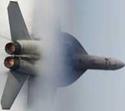

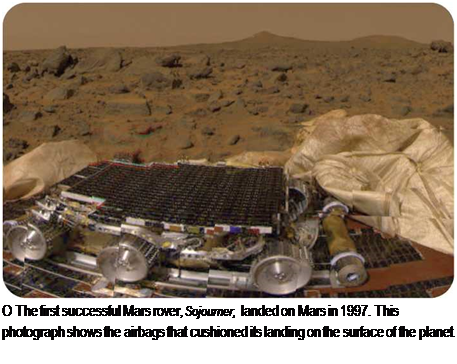
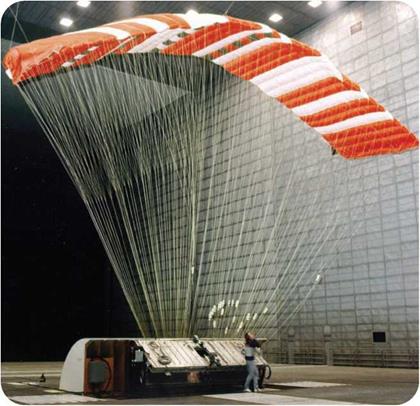 the test object. The way the tufts lay flat, or stick up, or flutter shows the airflow. Another testing method is to release fine streams of smoke into a wind tunnel. The smoke follows the airflow and shows whether it is smooth or turbulent. In a third method, the model being studied in the wind tunnel is painted with a pressure-sensitive liquid that changes when air blows against it. Another type of tunnel has small holes, called pressure taps, drilled at important points. The air pressure in the holes is measured.
the test object. The way the tufts lay flat, or stick up, or flutter shows the airflow. Another testing method is to release fine streams of smoke into a wind tunnel. The smoke follows the airflow and shows whether it is smooth or turbulent. In a third method, the model being studied in the wind tunnel is painted with a pressure-sensitive liquid that changes when air blows against it. Another type of tunnel has small holes, called pressure taps, drilled at important points. The air pressure in the holes is measured.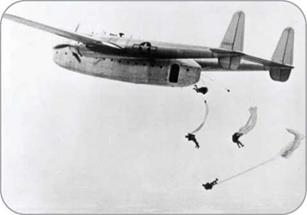
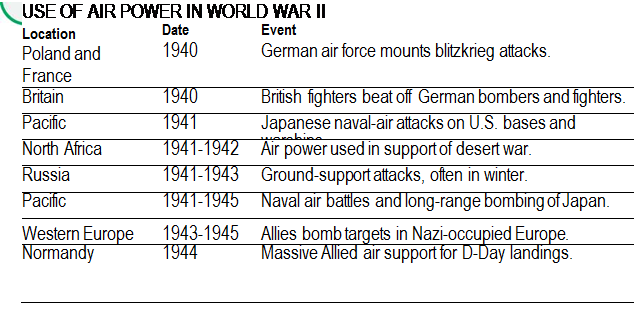
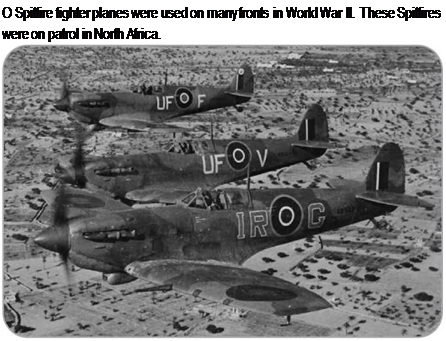 warplanes were flown by the U. S. Army, U. S. Navy, and U. S. Marine Corps.
warplanes were flown by the U. S. Army, U. S. Navy, and U. S. Marine Corps.

 • Supersonic Flight • Velocity
• Supersonic Flight • Velocity

 it creates. The bigger the propeller and the bigger the pressure difference, the greater the thrust.
it creates. The bigger the propeller and the bigger the pressure difference, the greater the thrust.